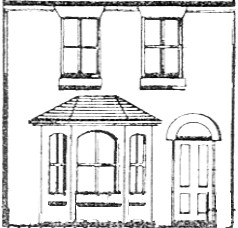Care & Repair
Fireplaces

The Victorian Society Guides
iv/ FIREPLACES
The Victorian Society is the most authoritative source of historical information on properties of this age.
How can you tell whether it’s safe to open up a blocked fireplace?
Go outside and look at the chimney. It may have been capped or cowled but it should not have been completely sealed. Even if you do not intend to reinstate any fireplaces it should be unsealed, to ventilate the chimneystack.
Inside the house, remove whatever has been use to seal the fireplace, but do not demolish any brickwork outside the ‘builder’s opening’. Light a spill or twist of paper in the opening. If it burns well and the flame is drawn inwards and upwards, the flue is clear. Get a chimney sweep to clean and inspect the flue before proceeding further. The National Association of Chimney Sweeps
Do you need permission to put back a Victorian fireplace if you live in a conservation area?
No. Internal alterations to houses in conservation areas do not generally require special consent. If in doubt, check with the conservation officer of your local planning department.
Do you need permission to put back a Victorian fireplace if you live in a Listed building?
In most cases, yes. Listing protects the house as it was at the time it was added to the list, so even if you want to reinstate the fireplace as it was originally built, you may need to apply for listed building consent. Call the conservation officer in your local planning department for advice.
What types of fuel are you allowed to burn on an open fire?
You cannot burn wood or coal on an open fire in a smokeless zone. Your local authority can tell you whether you live in a smokeless zone. More information is available from The Solid Fuel Association
How can I find out what sort of fireplace my house originally had?
The best guide would be an original fireplace from a neighbouring house of similar age and date that has escaped modernisation. You can also look for clues as you open up a blocked fireplace: shadowy lines in the plaster on the chimneybreast may indicate the scale and proportions of a missing surround. If you find any parts of the grate or its fittings within the fireplace opening, you can take them to a fireplace specialist or an architectural salvage yard to see whether they have matching parts in stock.
When choosing a replacement fireplace, take into account the status of the house and the room where the new fireplace is to be installed. An elaborate, oversized grate will not suit the living room of an artisan’s cottage and be equally out of place in a maid’s bedroom in a mansion.
How do you get paint off a cast iron grate?
Don’t use heat: the metal may crack under sudden localised changes of temperature. Use a proprietary paint stripper such as Nitromors. Scrape off the softened paint with plastic or wooden spatulas, and work on fine detail with a nylon-bristle brush. Clean the bare metal with white spirit (not water, which might encourage rust to form).
What’s the best finish for a cast iron grate?
Use Liberon Iron Paste or Zebo polish (available from paint shops, ironmongers and DIY stores). Apply the polish sparingly and buff up the surface with lots of elbow grease. A low-effort alternative is to paint the grate with ‘stove black’ paint, which is specially formulated to resist heat.
What’s the best finish for a timber fire surround?
Expensive hardwoods such as mahogany or oak were simply polished or varnished. Pitch pine was often stained and varnished. Softwoods (pine/deal) were never left bare or stripped, but always given a paint finish.
Suggestions for suitable paint finishes for pine fire surrounds are given in our fireplaces booklet or The Victorian Society Book of the Victorian House.
How do you clean smoke stains off a marble fire surround?
Start by wetting the stained area, to prevent the dirt being drawn into the marble when it is dissolved. Apply the cleaning solution, working it into the stain with a nylon-bristle brush. Rinse the marble well and dry with a soft cloth. Work up from weaker to stronger treatments:
Household detergent dissolved in warm, distilled water
- dilute household bleach
- A solution of 1 part hydrogen peroxide (100 vol.) to 3 parts water commercial marble cleaner, e.g. HG Spot Stain Remover
















